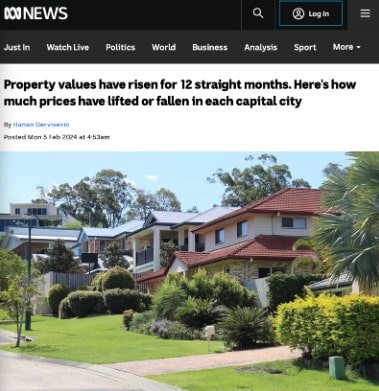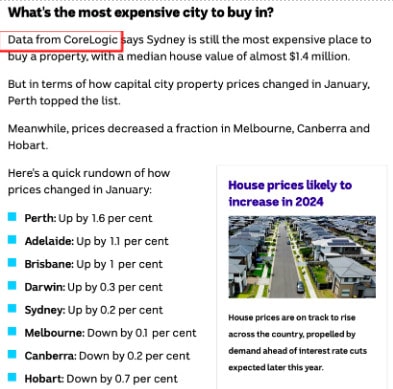- The first step is making the call.
- 1300 022 482
- hello@searchpartyproperty.com.au
Hedonic Indices: What Investors Need to Know

If you’ve ever read a news article about Australian real estate, there’s a decent chance you’ve come across CoreLogic’s hedonic indices. These indices, published monthly, have become something of a benchmark in the industry for understanding the comparative performance of Australian property markets over time.
Besides our own monthly market smart reports, even the biggest Australian publications have come to rely on these figures published by CoreLogic:


So, if huge numbers of people are relying on these numbers (and making major financial decisions based upon them!), it raises a couple of important questions:
- How do they work?
- How can we trust their accuracy?
At first glance, it seems like a pretty simple problem, doesn’t it?
To understand the monthly change in prices, a basic approach might be to simply take the average value of all home sales that took place in one month and compare that figure to the average of the month prior. The difference in these averages would then tell us the change in home prices between the two months.
Simple enough? Unfortunately, no.
The big problem is that, within a single month, only a fraction of properties in any given market will be transacted, and it’s highly unlikely that a tiny subsection of properties will be descriptive of the broader market.
Imagine a scenario in Sydney – where the median house price is currently around $1.6m.
Suppose that:
- In January, 100 houses were sold, with an average sale price of $1.8m.
- In February, a further 100 houses were sold, this time with an average sale price of $1.4m.
This is an admittedly extreme example, but based on these figures alone, one might conclude that house prices in Sydney had declined by $200k. Clearly, the average value of sales can’t necessarily be taken as descriptive of the broader market. It may well be the case that more of an area’s top properties sold in one month, while more of the worst properties were sold in another month.
Consider another example within the same neighbourhood:
- House A sold for $800k in 2014.
- House B sold for $1.5m in 2024.
Can one conclude that prices in this neighbourhood rose by $700k in 10 years?
It’s certainly possible!
But it’s also just as possible that when it was sold in 2014, House A was considered a small, older property with minimal features while, when it was sold in 2024, House B was a large, newly built home with state-of-the-art features and amenities. If that were true, the change in value may be far less than we had expected.
In both examples above, one vital piece of information is absent, preventing a more complete comparison of the figures:
Quality!
Returning to our examples, if we were to also have information describing the quality of each home sold – e.g. size, location, bedroom/bathroom count, construction date, etc. – it would then be possible to normalise the value of each sale in a given period.
Even if a (very out of place) mansion was sold for $20m in a poorer suburb, a calculated change in market value can still be accurate, if we also consider that the $20m mansion was built last week and has 17 bedrooms, 8 swimming pools and 5 tennis courts. A tad hyperbolic, maybe, but with this information it’s possible to maintain consistent figures that consider all home sales, yet still accurately reflect the broader market.
Without getting into the maths, this is what Hedonic Value Indices are designed to do.
The term ‘hedonic’, like the concept of hedonism, indicates that a pursuit of pleasure is being accounted for within the price index. We assume that consumers will pay more for better features in a property, from which they will derive more pleasure – hence, ‘hedonic’. An index which takes this tendency into account can thus be described as a ‘Hedonic Value Index’.
As we’ll explore in a future article, no approach is perfect, and hedonic models do have some limitations. However, hopefully this article has given you some idea of how these models work, and why they have become so widely relied upon within the Australian real estate industry.
Want to discuss this further?
For expert guidance in property strategy, and what it could mean for you as a property investor, book in for a free consultation to make informed decisions, tailored to your investment goals. Don’t let affordability challenges hinder your success. Act now with Search Party Property!




